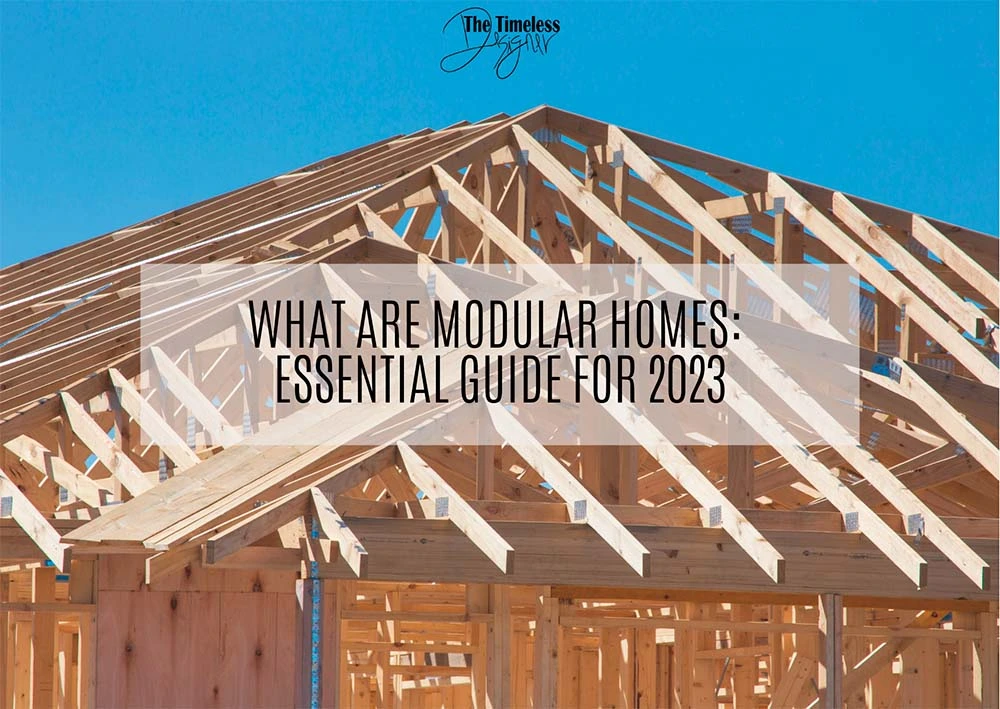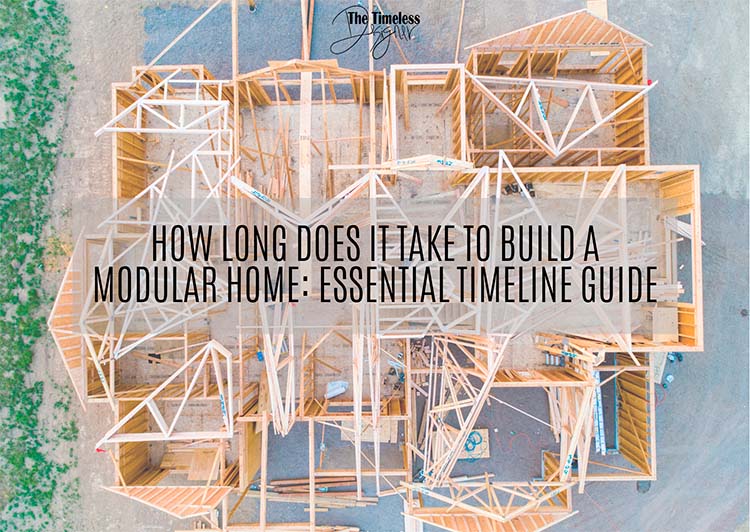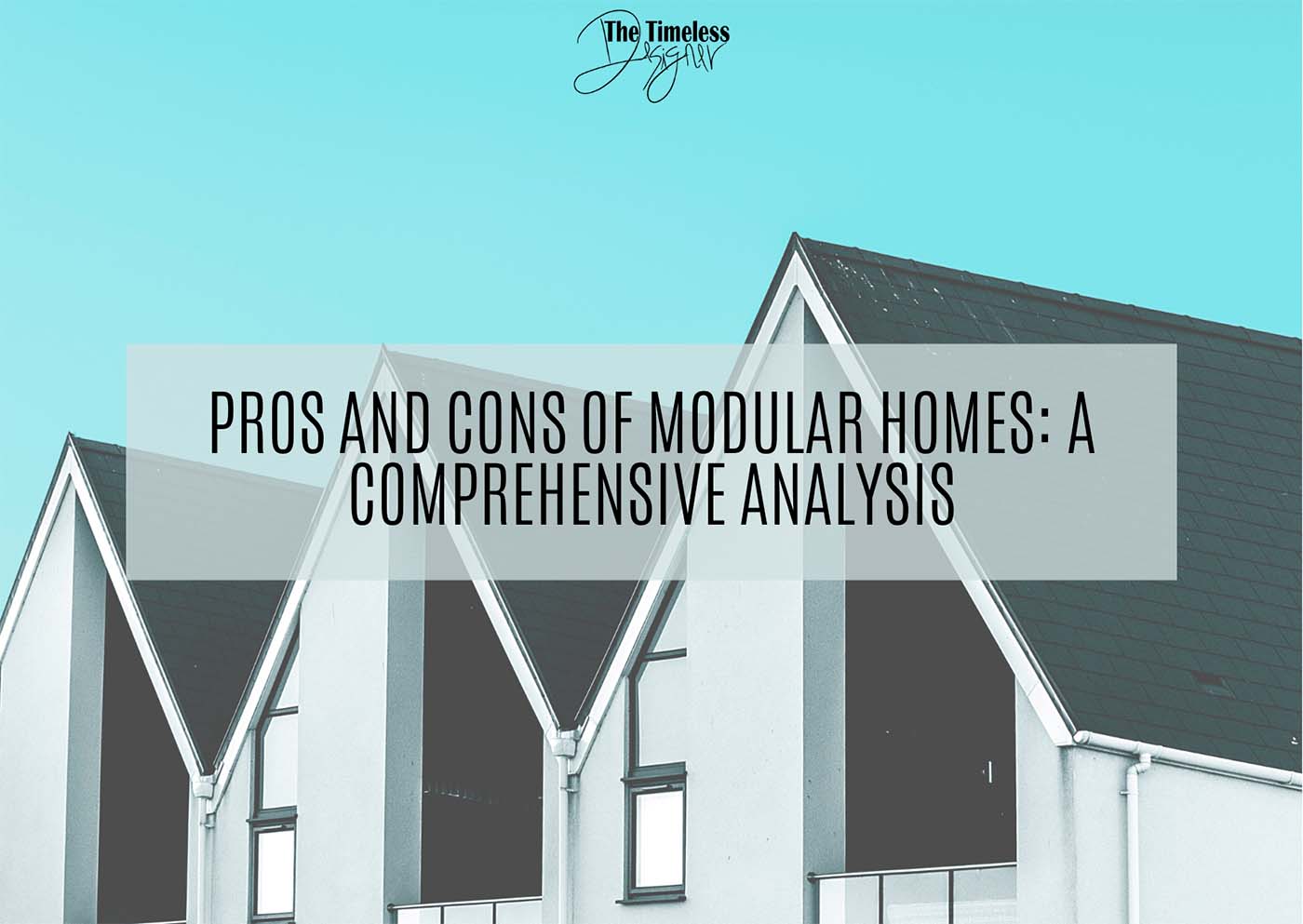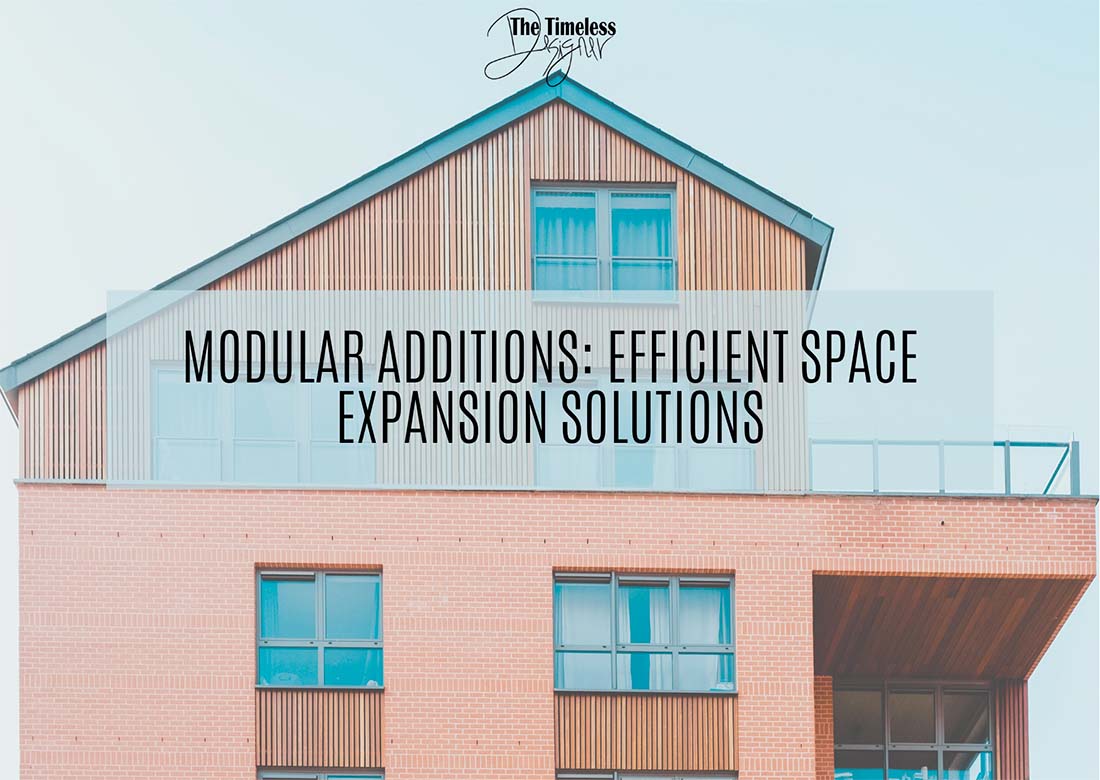When considering a new home, modular homes offer an attractive alternative to traditional stick-built construction. These modern, customizable, and energy-efficient homes are constructed in sections or “modules” off-site and then transported and assembled at the desired location. As you explore this option, you’re likely to be curious about the costs involved in purchasing and installing a modular home.
On average, modular home prices range from $80 to $160 per square foot, or $120,000 to $270,000 installed. It’s important to note that these costs can vary based on factors like the size and style of your home, the location of your property, and any desired customizations. To get a grasp on the costs, it’s essential to account for the base unit price, installation, and any additional features you’d like to incorporate.
When browsing for your dream modular home, you have numerous design choices available, from ranches and Cape Cods to two-story homes with various architectural options and interior designs. By keeping in mind the overall costs and customizations you desire, you can find the perfect modular home at the right price to suit your budget and lifestyle.
Understanding Modular Homes
Defining Modular Homes
Modular homes are a type of prefabricated housing built off-site in a factory and transported to its final location for assembly. These homes are built to meet or exceed local building codes and are constructed in sections, known as modules. Each module is built indoors, ensuring that your home is not exposed to adverse weather conditions during the construction process. This can lead to a more precise and efficient building process compared to traditional site-built homes. Modular homes also offer endless design possibilities, allowing you to create a unique, customized living space.
Prefab vs Site-Built Homes
It is crucial to understand the differences between prefab (modular) and site-built homes. Here are some key factors that differentiate the two types of construction:
- Construction Process: Prefab homes are constructed in factories, while site-built homes are built on location from the ground up. This primary difference impacts several aspects of the overall building process, such as construction times, costs, and quality control.
- Time to Build: Since modular homes are built indoors, the construction timeline is not affected by weather conditions like traditional site-built homes. As a result, prefab homes can be completed in a fraction of the time it takes to construct a site-built home.
- Cost: The cost of modular homes generally falls within the range of $75 to $175 per sq. ft, delivered and installed ModularHomes.com. In some cases, this can be more affordable than site-built homes, as they require fewer labor and material costs. However, the total cost for both types of homes may vary based on factors such as location, size, design, and land preparation.
- Customization: While both modular and site-built homes offer customization options, modular homes tend to have a more extensive range of pre-designed floor plans and features, which can streamline the design process.
- Quality Control: With modular homes, the construction process takes place in a controlled factory setting, resulting in better quality control and a more consistent final product than site-built homes. Additionally, since modules are built to withstand transport, they are often structurally stronger than their site-built counterparts.
Factors Affecting Modular Home Prices
When considering modular homes, it’s important to understand the various factors that contribute to the overall price. The affordability and convenience of these homes often stem from a number of elements, including size, materials, and installation costs.
Size and Floor Plans
One of the primary factors influencing the price of a modular home is the size and floor plan you choose for your dwelling. Modular home prices generally increase with the number of bedrooms and total square footage. For example, one-bedroom units can start at $40,000, while larger five-bedroom units can cost upwards of $805,000. When selecting a floor plan, consider your space requirements and how much you are willing to spend per square foot.
Materials and Customizations
The materials and customizations involved in building your modular home also play a significant role in determining the cost. While the base price for a 1,500 sq. ft. modular home ranges from $75,000 to $150,000, or $50 to $100 per square foot, customizing your home with different materials or upgraded appliances can further increase the cost. It’s essential to strike a balance between your budget and the degree of customization you desire in order to achieve the desired results without overspending.
Delivery and Installation Costs
Finally, the delivery and installation of your modular home significantly impact the overall cost. Modular homes require assembly and on-site finishing work, resulting in total costs that can range from $120,000 to $240,000 for a complete turn-key installation. Factors such as the distance from the factory to your building site, the complexity of the installation process, and fees associated with permits and inspections will all contribute to these costs.
Taking these factors into account, you’ll be better equipped to understand the variables that affect modular home prices and make informed decisions to build a comfortable, stylish, and cost-effective living space.
Evaluating Costs Based on Home Styles and Regions
Ranch and Cape Cod Style Homes
When considering a modular home, one factor that will significantly influence the cost is the chosen home style. Ranch and Cape Cod style homes are among the most popular options in the modular housing world. Ranch style homes are single-story and typically cost between $180,000 to $360,000, with a national average cost of $270,000. Cape Cod style homes, on the other hand, are characterized by steeply pitched roofs and typically cost between $100 to $250 per square foot for the base unit.
South, West, and Midwest Regions
It’s essential to understand how regional differences impact the cost of constructing a modular home. The South, West, and Midwest regions in the United States attract varying cost estimates based on factors like land value, labor costs, and local regulations.
- South: In the South, you can expect lower costs for labor and land compared to other regions; however, the cost of materials might be higher due to high demand. Overall, this region offers one of the most affordable paths to modular home ownership.
- West: The West region comprises diverse states, from California to Arizona. Factors contributing to the costs in this region include higher land prices, stricter building codes, and increased competition for building materials. Consequently, building a modular home in the West region can be more expensive.
- Midwest: The Midwest region often boasts reasonable costs for both land and labor, allowing for more affordable modular home construction. However, you should be prepared to incur additional costs due to potential weather challenges that may affect the construction timeline.
When planning to purchase a modular home, it’s crucial to consider the home style you prefer and the region you plan to build in. By carefully evaluating these factors, you can make a more informed decision about your future property.
Additional Pricing Components
Land Preparation and Utility Construction
When considering modular homes, it’s essential to account for the costs of land preparation and utility construction. These expenses can significantly impact your overall budget. Land preparation typically includes clearing the land, grading, and foundation work. Depending on the complexity of the terrain, the cost can vary greatly. Clearing, grading, and excavation costs can be between $1,000 and $5,000 or more.
Utility construction involves connecting your new home to essential services such as water, electricity, natural gas, and sewage. These costs can also range widely, but on average, you can expect to pay around $10,000 to $30,000 for utility connections.
Financing and Taxes
Financing options for modular homes are similar to those for traditional homes. You can obtain mortgages or construction loans to cover the costs. Interest rates and terms vary, so it’s essential to shop around for the best financing option for your situation. Remember that when you finance a modular home, property taxes are likely to be part of your annual expenses. These taxes are typically based on the valuation of your property and vary by location.
Permits and Fees
Before building a modular home, you need a variety of permits and approvals from local authorities. These permits ensure that your new home complies with zoning regulations, building codes, and other local requirements. Some common permits include building, plumbing, electrical, and fire safety permits. The costs of these permits can range from a few hundred to several thousand dollars, depending on your location and the specific requirements.
You’ll also need to consider additional expenses such as freight, which covers transporting the modular sections from the factory to your building site. The cost of freight is based on the distance from the factory to your location and can range from $1,000 to $20,000 or more.
In summary, when estimating the total cost of a modular home, you should consider land preparation, utility construction, financing and taxes, and permits and fees in addition to the base price of the home itself. By being aware of these additional expenses, you’ll be able to create a more accurate budget and make an informed decision when purchasing a modular home.
Choosing a Modular Home Manufacturer and Retailer
When it comes to selecting a modular home, the manufacturer and retailer play a crucial role in determining the quality, design, and overall satisfaction of your new living space. By doing thorough research, you can find the right combination to fit your needs.
Popular Manufacturers
Several manufacturers stand out in the modular home industry for their quality and reputation. One such company is Champion Homes, which offers various floor plans and customizable options. As you explore different manufacturers, consider factors such as available designs, customization options, build quality, and energy efficiency to make an informed decision.
Some other popular manufacturers include:
- Impresa Modular (known for custom designs)
- Commodore Homes (excellent budget options)
- Method Homes (high-end designs)
- Deer Valley (energy-efficient choices)
Selecting a Retailer
After choosing a manufacturer, it’s essential to find a reputable retailer or home center that will facilitate the process. Retailers assist in the ordering, delivery, and setup of your new home. When selecting a retailer, consider asking the following questions:
- Experience: How long have they been in business, and do they have experience working with your chosen manufacturer?
- Service: What services do they provide beyond the sales and installation of your home, such as help with financing or site preparation?
- References: Can they provide testimonials or examples of past work?
- Warranty: Do they offer guarantees or warranties on their services?
- Sales Price: Is the price competitive compared to other retailers, and are there any hidden costs you should be aware of?
By considering these factors, you can ensure that you find a reputable retailer to partner with in your modular home journey. This will ultimately lead to a smoother process, a well-built home, and a higher level of satisfaction for you, the homeowner.
Benefits of Modular Homes
Flexibility and Customization
Modular homes offer a great deal of flexibility and customization to fit your specific needs and preferences. You can choose from a wide variety of floor plans, designs, and styles that suit your lifestyle. Furthermore, you can customize your home’s finishes like flooring, countertops, cabinetry, and more to truly make it your own.
Energy Efficiency
One significant advantage of modular homes is their energy efficiency. Factory-built homes are constructed with tight tolerances and high-quality materials, ensuring better insulation and sealing. This helps your home retain heat in the winter and keeps it cool in the summer, cutting your energy consumption and reducing your monthly bills. Many modular homes also come with energy-efficient windows, appliances, and lighting features, further contributing to their overall efficiency.
Shorter Construction Time
Constructing a modular home is a faster process compared to traditional site-built homes. Since these homes are built indoors, they are not affected by weather delays, which speeds up the construction time. The factory-setting also allows for assembly line efficiency, meaning your home can be completed 30% to 60% faster than a stick-built house. This faster move-in schedule not only saves you time but can also reduce the overall costs associated with building a home.
Key Considerations When Selecting a Modular Home
Budget and Overall Value
When choosing a modular home, it’s crucial to consider your budget and the overall value of the home. Modular homes can vary in price, with an average cost of $80 to $160 per square foot, or $120,000 to $270,000 installed. This cost depends on factors such as floor plan, number of bedrooms, and customizations. To get the most value for your money, be prepared for additional expenses like:
- Site preparation: Clearing and leveling the land before installation.
- Utility connections: Connecting water, sewer, and electricity to your new home.
Size and Style Preferences
Your preferences for size and style will play a significant role in the selection process. Modular homes come in various sizes, styles, and designs. It’s essential to have a clear understanding of your desired square footage, number of bedrooms, and any specific architectural features you might want. For example, a 1-story modular home costs from $40,000 to $113,000, with homeowners spending an average of $76,500 for an 800- to 1,500-square-foot space.
Bear in mind that customizing your prefab modular home will impact the overall price. It’s essential to strike a balance between your preferences and your budget.
Land and Location Factors
When selecting a modular home, don’t forget to consider the land and location you plan to build on. Some crucial factors to keep in mind are:
- Home site location: The price of your modular home can vary based on the location of your building site and the area’s accessibility for delivery and installation.
- Local regulations: Research local zoning laws, building codes, and any restrictions that may impact your ability to build a modular home on your chosen plot of land.
- Land preparation: Depending on the land’s condition, you might need to invest more money in site preparation to ensure a stable foundation for your new home.
By keeping these factors in mind, you can make an informed decision when selecting a modular home that fits your needs, preferences, and budget.
Final Thoughts
In conclusion, modular homes are the future of housing, offering a fresh and customizable approach that breaks free from the shackles of traditional construction and is full of advantages for every homeowner! With prices ranging from $80 to $160 per square foot, these modern marvels combine style, efficiency, and affordability.
But it doesn’t stop there! From flexible floor plans to energy-saving features, modular homes deliver a personalized living experience that fits your unique lifestyle. And let’s not forget about the shorter construction time, meaning you’ll be sipping lemonade on your new front porch while others are still laying bricks.
So, why settle for cookie-cutter houses when you can have a modular masterpiece? Embrace the revolution, unleash your creativity, and build the home of your dreams. It’s time to break free from the mold and make a statement.
Welcome to the future of home construction, where imagination knows no bounds!




